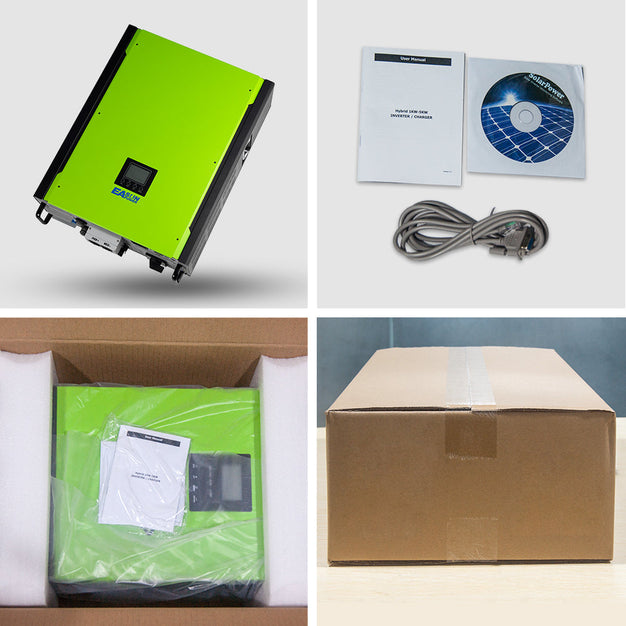Unlock the Power of the Sun: Discover the Ultimate MPPT Solar Inverter
Unlock the Power of the Sun: Discover the Ultimate MPPT Solar Inverter Options You Can't Resist!
As the world increasingly shifts towards renewable energy, the importance of solar energy systems has never been more pronounced. Among the key components of these systems is the MPPT solar panel inverter, which plays a crucial role in maximizing energy output. MPPT, or Maximum Power Point Tracking, technology ensures that solar panels operate at their optimal efficiency, translating sunlight into usable energy with remarkable effectiveness. This article aims to shed light on the various advanced MPPT inverter options available, helping you navigate through comparisons and guide you in making an informed decision when purchasing one for your solar energy system.
Understanding MPPT Technology
At its core, MPPT technology is designed to optimize the power output of solar panels by continuously adjusting the electrical load to find the maximum power point. Traditional inverters often operate at a fixed voltage, which can limit their efficiency in varying environmental conditions. In contrast, MPPT inverters dynamically track the maximum power point of solar panels, ensuring they harvest the maximum amount of energy available. This ability to adapt to changing sunlight conditions, such as cloud cover or shading, means that MPPT inverters can increase energy yields by up to 30% compared to their traditional counterparts. Friends of mine who have installed MPPT inverters have consistently reported higher energy production, leading to significant cost savings on their electricity bills. This makes MPPT technology an essential consideration for anyone looking to invest in solar energy.
Key Features to Look for in Advanced MPPT Inverters
When searching for the right advanced MPPT solar inverter, several critical features should guide your decision-making process. First and foremost, efficiency ratings are paramount; look for inverters that boast high efficiency levels, typically above 95%. Compatibility with various solar panel types is another important aspect, especially if you plan to expand your system in the future. Additionally, monitoring capabilities, such as real-time performance tracking via mobile apps, can provide valuable insights into your energy production and system health. Finally, safety features like overvoltage protection and temperature regulation are crucial to ensure the longevity and reliability of your inverter. My neighbor, who recently upgraded to an advanced MPPT inverter, was thrilled with the added safety features, which provided peace of mind during extreme weather conditions.
Comparing Different MPPT Inverter Options
With a plethora of advanced MPPT solar inverters on the market, comparing different options can be daunting. Generally, these inverters can be categorized into three main types: string inverters, microinverters, and power optimizers. String inverters are the most common and are known for their cost-effectiveness, but they may struggle with shading issues. Microinverters, on the other hand, are installed on each individual panel, maximizing energy production even in partially shaded arrays, but they often come with a higher price tag. Power optimizers combine the benefits of both, enhancing the performance of each panel while still using a central inverter. However, they require a bit more installation effort. User reviews often highlight microinverters for their superior performance in diverse conditions, while string inverters are praised for their simplicity and lower upfront costs. Each option has its pros and cons, making it essential to evaluate your specific needs and installation conditions before making a choice.
Pricing and Where to Buy
The price range for advanced MPPT solar inverters can vary widely, typically ranging from a few hundred to several thousand dollars, depending on the type and features. Factors influencing pricing include the inverter’s efficiency, brand reputation, and any additional features such as monitoring systems. When it comes to purchasing, consumers have a variety of options. Online platforms often provide a broader selection and competitive prices, while local retailers may offer the advantage of face-to-face consultation and support. It's advisable to compare prices across multiple channels to ensure you're getting the best deal. A friend of mine recently purchased an MPPT inverter online and found it to be more affordable than local stores, reinforcing the importance of shopping around.
Making an Informed Choice for Energy Savings
Choosing the right advanced MPPT solar inverter is integral to maximizing the efficiency of your solar energy system. As you contemplate your options, consider your specific energy needs, the characteristics of your solar panels, and the environmental conditions of your installation site. By conducting thorough research and weighing the pros and cons of each inverter type, you can make a well-informed decision that will lead to long-term energy savings and enhance your investment in renewable energy. Investing in advanced technology not only benefits your wallet but also contributes to a more sustainable future.